Urban
12.10.2013 - 12.01.2014
The images in the exhibition represent the photographers view of the urbanized world in its diverse aspects: geographic, cultural and historical.
The photographers exhibited: David Armstrong, Eugène Atget, Margaret Bourke-White, Vincenzo Castella, Giuseppe Cavalli, Fritz Henle, Matthias Hoch, André Kirchner, Arthur Köster, Lotte Laska, Anna Leader, Anthony Linck, Henriette Moulier, Pino Musi, Nicholas Nixon, Arrigo Orsi, Luciano Rigolini, Thomas Ruff, Edward Ruscha, Thomas Struth, Reinhart Wolf.
... The story of the city and urbanization are in a tight relation with the story of photography. Paris was the work site and New York the set.
What I see is not so much the buildings and places that disappear or the city itself that changes, it is not the document of the disappearance but the way the change is observed...

Thomas Struth
Bernardstrasse 2, 1991
gelatin silver print
37.8 x 47.9 cm
Bernardstrasse 2, 1991
gelatin silver print
37.8 x 47.9 cm
CATALOGUE
ARTWORKS
ARTISTS
INSTALLATION VIEW
Eugène Atget
Pioneer of documentary photography, noted for his determination to document all the architecture and street scenes of Paris before their disappearance to modernization. He began selling his city subjects around Paris, until the National Library of France took notice of him and bought the entire collection of his photos.
Pioneer of documentary photography, noted for his determination to document all the architecture and street scenes of Paris before their disappearance to modernization. He began selling his city subjects around Paris, until the National Library of France took notice of him and bought the entire collection of his photos.
Margaret Bourke-White
She began taking industrial photographs when she was twenty and had an incredible will power, obsession for perfection and a great desire to gauge herself not only with photography but also with subjects which were unusual for women: the industrial world, current affairs, reportage on America and on things contemporary. In 1929, she came to a professional crossroads, and went to New York to work on the launching of Fortune magazine and, in 1935, of Life magazine. She was the first Western photographer to be allowed inside the USSR to take photos. She became the first female war correspondent of the Second World War and in 1941 became the official photographer of the U.S. Army Air Force.
She began taking industrial photographs when she was twenty and had an incredible will power, obsession for perfection and a great desire to gauge herself not only with photography but also with subjects which were unusual for women: the industrial world, current affairs, reportage on America and on things contemporary. In 1929, she came to a professional crossroads, and went to New York to work on the launching of Fortune magazine and, in 1935, of Life magazine. She was the first Western photographer to be allowed inside the USSR to take photos. She became the first female war correspondent of the Second World War and in 1941 became the official photographer of the U.S. Army Air Force.
Vincenzo Castella
Italian photographer, guitarist and filmmaker, in 1975, after studying Cultural Anthropology at "La Sapienza" University in Rome, he began his photographic activity. One of his most important works is Private Geography, color photographs of domestic interiors made between 1975 and 1982. In 1976 he took a trip through the southern United States, where he made, together with Lucio Maniscalchi, the 16mm film "Hammie Nixon's People," focusing on the colors and sounds of African American society. The most important works are "Nomadic Cities," about contemporary Western cities, and "Buildings," urban portraits shot from very high, but never aerial positions. Lives and works in Milan, Italy.
Italian photographer, guitarist and filmmaker, in 1975, after studying Cultural Anthropology at "La Sapienza" University in Rome, he began his photographic activity. One of his most important works is Private Geography, color photographs of domestic interiors made between 1975 and 1982. In 1976 he took a trip through the southern United States, where he made, together with Lucio Maniscalchi, the 16mm film "Hammie Nixon's People," focusing on the colors and sounds of African American society. The most important works are "Nomadic Cities," about contemporary Western cities, and "Buildings," urban portraits shot from very high, but never aerial positions. Lives and works in Milan, Italy.
Giuseppe Cavalli
Twin of the painter Emanuele Cavalli. He moved to Rome in 1921, and there attended high school and then college, graduating in law in 1929. In 1935 he moved to Senigallia, where he worked as a lawyer, but at the same time devoting himself to photography.
Twin of the painter Emanuele Cavalli. He moved to Rome in 1921, and there attended high school and then college, graduating in law in 1929. In 1935 he moved to Senigallia, where he worked as a lawyer, but at the same time devoting himself to photography.
Fritz Henle
His preference for the Rolleiflex camera earned him the nickname of Mr. Rollei. He started as self-taught in photography in the Twenties. In 1936 he emigrated to New York where he lived until 1948. He had a career spanning more than 60 years, during which he amassed an archive of more than 110,000 negatives. Images of Europe, India, Japan, Hawai, United States, Mexico, and the Caribbean.
His preference for the Rolleiflex camera earned him the nickname of Mr. Rollei. He started as self-taught in photography in the Twenties. In 1936 he emigrated to New York where he lived until 1948. He had a career spanning more than 60 years, during which he amassed an archive of more than 110,000 negatives. Images of Europe, India, Japan, Hawai, United States, Mexico, and the Caribbean.
Matthias Hoch
After his days as a student at the Academy of Visual Arts Leipzig, he explored the pervasive formal language of modern European urban development. lives in Leipzig.
After his days as a student at the Academy of Visual Arts Leipzig, he explored the pervasive formal language of modern European urban development. lives in Leipzig.
Andre Kirchner
He studied classical philology and history in Munich and in Berlin. Freelance photographer and writer since 1986 when he had his first solo exhibition at the Galerie im Körnerpark in Berlin. Many more solo and group exhibitions and book publications followed. He is a member of the jury and has been an appointed member of the German Society for Photography since 2019. Lives in Berlin.
He studied classical philology and history in Munich and in Berlin. Freelance photographer and writer since 1986 when he had his first solo exhibition at the Galerie im Körnerpark in Berlin. Many more solo and group exhibitions and book publications followed. He is a member of the jury and has been an appointed member of the German Society for Photography since 2019. Lives in Berlin.
Arthur Koster
Architectural photographer active in Berlin since 1019, known for his collaborations with many architects in particular with Bruno Taut.
Architectural photographer active in Berlin since 1019, known for his collaborations with many architects in particular with Bruno Taut.
Lotte Laska
Granddaughter and assistant of photographer Ruth Hallensleben. She is known for her photographic work related to industry and travel, in particular the one dedicated to American cities.
Granddaughter and assistant of photographer Ruth Hallensleben. She is known for her photographic work related to industry and travel, in particular the one dedicated to American cities.
Anna Leader
She graduated from the University in Brighton with BA honors in photography in 2002. She has exhibited throughout Europe and had solo exhibitions at the Coalmine Gallery, Winterthur, the Rada in Locarno and at the Galerie Campagne Première in Berlin. She also explores other media such as drawing and painting. She lives in London.
She graduated from the University in Brighton with BA honors in photography in 2002. She has exhibited throughout Europe and had solo exhibitions at the Coalmine Gallery, Winterthur, the Rada in Locarno and at the Galerie Campagne Première in Berlin. She also explores other media such as drawing and painting. She lives in London.
Anthony Linck
He was a Life magazine photographer from 1945 to 1954. The two great loves of his life were flying and photography. He left Life magazine to become a freelance photographer specializing mainly in aircraft and industrial photography.
He was a Life magazine photographer from 1945 to 1954. The two great loves of his life were flying and photography. He left Life magazine to become a freelance photographer specializing mainly in aircraft and industrial photography.
Henriette Moulier
She ranks among the “humanist photographers” who dominated postwar French photography. Fascinating photographs of scenes of everyday life in the streets and markets of Paris. In the 50s, she was presented more than once at the Salon National de la Photographie.
She ranks among the “humanist photographers” who dominated postwar French photography. Fascinating photographs of scenes of everyday life in the streets and markets of Paris. In the 50s, she was presented more than once at the Salon National de la Photographie.
Pino Musi
Born and grew up in Salerno is an Italian photographer and visual artist currently based in Paris. He taught himself black-and-white photography beginning at age fourteen. His subjects have included modern architecture, classical ruins, steel mills, rural architecture and urban cityscapes viewed as pure forms and abstract art. His photographs have been exhibited at the Venice Biennale, the Museum of the Ara Pacis in Rome, and galleries in Italy, Germany, England, France and Switzerland.
Born and grew up in Salerno is an Italian photographer and visual artist currently based in Paris. He taught himself black-and-white photography beginning at age fourteen. His subjects have included modern architecture, classical ruins, steel mills, rural architecture and urban cityscapes viewed as pure forms and abstract art. His photographs have been exhibited at the Venice Biennale, the Museum of the Ara Pacis in Rome, and galleries in Italy, Germany, England, France and Switzerland.
Nicholas Nixon
Known for his work in portraiture and documentary photography. He preferred working with large-format because it allowed prints to be made directly from negatives. In 1975 he began the project The Brown Sisters, consisting of a single portrait of his wife and her three sisters each year, consistently posed in the same left to right order.
Known for his work in portraiture and documentary photography. He preferred working with large-format because it allowed prints to be made directly from negatives. In 1975 he began the project The Brown Sisters, consisting of a single portrait of his wife and her three sisters each year, consistently posed in the same left to right order.
Arrigo Orsi
In 1920 he graduated in medicine and surgery in Bologna. In 1924 he was among the founders of the Institute of Clinical Medicine at the University of Milan. He dedicated himself to photography from the second half of the Thirties. He experimented with new techniques, new materials according to the lessons of the Bauhaus.
In 1920 he graduated in medicine and surgery in Bologna. In 1924 he was among the founders of the Institute of Clinical Medicine at the University of Milan. He dedicated himself to photography from the second half of the Thirties. He experimented with new techniques, new materials according to the lessons of the Bauhaus.
Luciano Rigolini
He studied film at the University of Paris VIII. In the early 1990s he attracted international attention with his Urban Landscapes. In 1995 he joined the documentary department of the European television channel Arte in Paris, where he was responsible for the creative development of art films until 2015. Since 2002 he has worked with photography exclusively through the appropriation and reinterpretation of amateur images and industrial documents. He has published several auteur books. He lives in Lugano, Switzerland.
He studied film at the University of Paris VIII. In the early 1990s he attracted international attention with his Urban Landscapes. In 1995 he joined the documentary department of the European television channel Arte in Paris, where he was responsible for the creative development of art films until 2015. Since 2002 he has worked with photography exclusively through the appropriation and reinterpretation of amateur images and industrial documents. He has published several auteur books. He lives in Lugano, Switzerland.
Thomas Ruff
German photographer who lives and works in Düsseldorf. He has been described as "a master of edited and reimagined images. In the summer of 1974, Ruff acquired his first camera and after attending an evening class in the basic techniques of photography he started to experiment, taking shots similar to those he had seen in many amateur photography magazines. During his studies in Düsseldorf and inspired by the lectures of Benjamin HD Buchloh, Ruff developed his method of conceptual serial photography. Ruff began photographing landscapes, but while he was still a student he transitioned to the interiors of German living quarters, with typical features of the 1950s to 1970s. This was followed by similar views of buildings and portraits of friends and acquaintances from the Düsseldorf art and music scene, initially in small formats. Ruff studied photography from 1977 to 1985 with Bernd and Hilla Becher at the Kunstakademie Düsseldorf (Düsseldorf Art Academy).
German photographer who lives and works in Düsseldorf. He has been described as "a master of edited and reimagined images. In the summer of 1974, Ruff acquired his first camera and after attending an evening class in the basic techniques of photography he started to experiment, taking shots similar to those he had seen in many amateur photography magazines. During his studies in Düsseldorf and inspired by the lectures of Benjamin HD Buchloh, Ruff developed his method of conceptual serial photography. Ruff began photographing landscapes, but while he was still a student he transitioned to the interiors of German living quarters, with typical features of the 1950s to 1970s. This was followed by similar views of buildings and portraits of friends and acquaintances from the Düsseldorf art and music scene, initially in small formats. Ruff studied photography from 1977 to 1985 with Bernd and Hilla Becher at the Kunstakademie Düsseldorf (Düsseldorf Art Academy).
Edward Ruscha
In 1956 he moved to Los Angeles to attend the Chouinard Art Institute. He has consistently combined the cityscape of his adopted hometown with vernacular language to communicate a particular urban experience. Lives in Los Angeles
In 1956 he moved to Los Angeles to attend the Chouinard Art Institute. He has consistently combined the cityscape of his adopted hometown with vernacular language to communicate a particular urban experience. Lives in Los Angeles
Thomas Struth
Thomas Struth is a German photographer who is best known for his Museum Photographs series, family portraits and black and white photographs of the streets of Düsseldorf and New York taken in the 1970s. Struth trained at the Düsseldorf Academy from 1973 until 1980 where he initially studied painting under Peter Kleemann and, from 1974, Gerhard Richter. Increasingly drawn to photography and with Richter's support, Struth joined the first year of the new photography class run by Bernd and Hilla Becher. Struth lives and works in Berlin and New York.
Thomas Struth is a German photographer who is best known for his Museum Photographs series, family portraits and black and white photographs of the streets of Düsseldorf and New York taken in the 1970s. Struth trained at the Düsseldorf Academy from 1973 until 1980 where he initially studied painting under Peter Kleemann and, from 1974, Gerhard Richter. Increasingly drawn to photography and with Richter's support, Struth joined the first year of the new photography class run by Bernd and Hilla Becher. Struth lives and works in Berlin and New York.
Reinhart Wolf
He studied art history and literature in Paris, Hamburg and in the USA. He became an independent photographer in Hamburg, and a teacher at the Staatliche Meisterschule für Mode Photographie.
He studied art history and literature in Paris, Hamburg and in the USA. He became an independent photographer in Hamburg, and a teacher at the Staatliche Meisterschule für Mode Photographie.

Exhibition catalogue: Urban
Size: 15 x 21 cm
Pages: 48 Softcover
Illustrations: 38 four-color print
Language: Italian/English
Edition: Fondazione Rolla, 2013
Size: 15 x 21 cm
Pages: 48 Softcover
Illustrations: 38 four-color print
Language: Italian/English
Edition: Fondazione Rolla, 2013
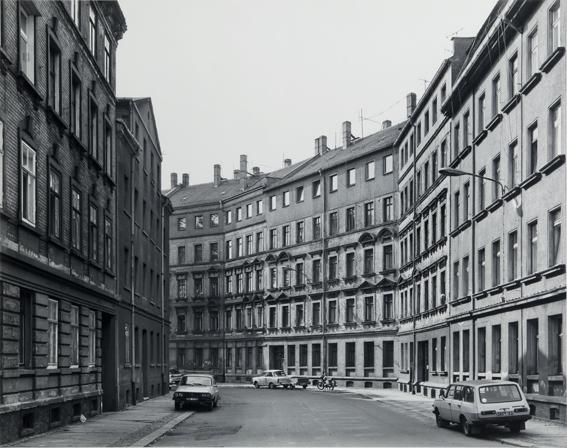
Thomas Struth
Bernhardstaße 2, 1991,
gelatin silver print
37,8 x 47,9 cm
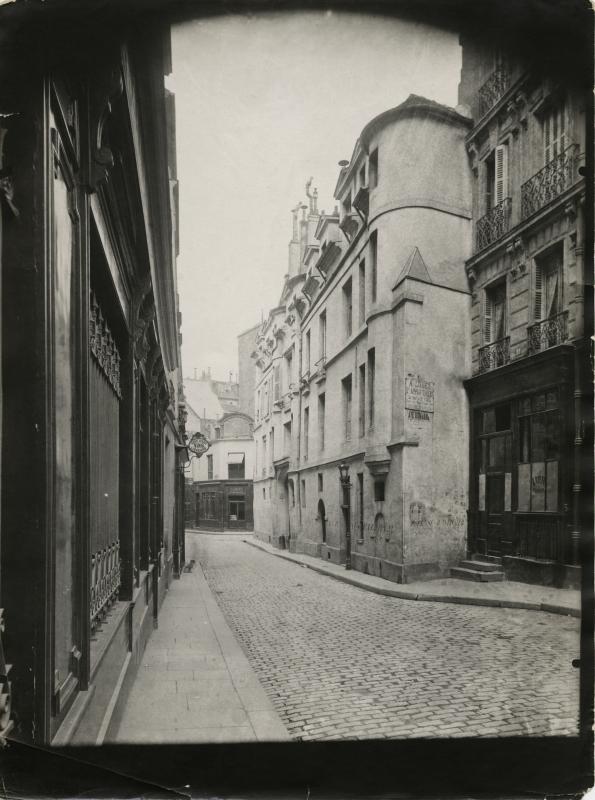
Eugène Atget
6, Rue Tournon, Paris, 1920ca,
gelatin silver print
24 × 17,7 cm
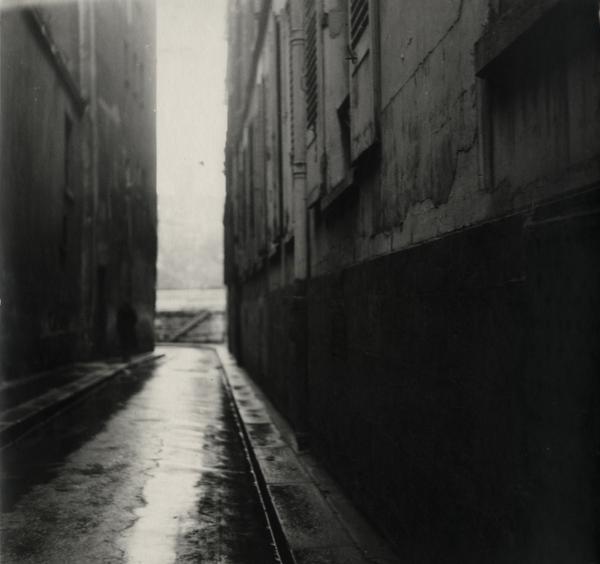
Henriette Moulier
Ruelle dans le Marais, Paris, c. 1950
gelatin silver print
27 × 28 cm
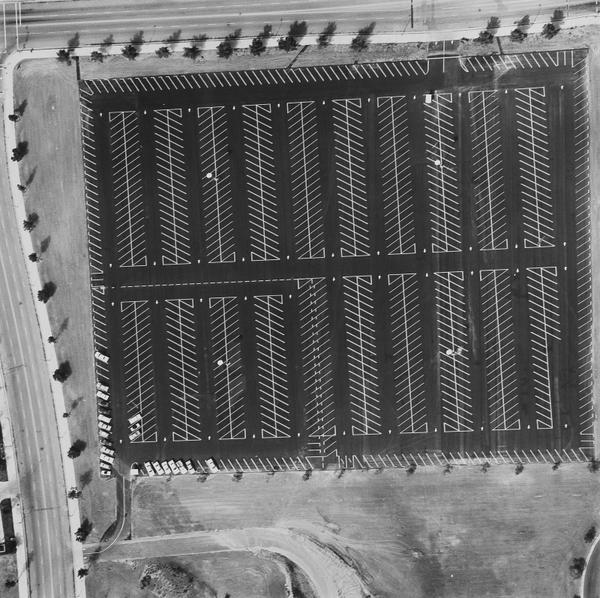
Edward Ruscha
Parking Lots ( #23: Century City 1800
Avenue of the Stars), 1967-99,
gelatin silver print
38 × 38 cm
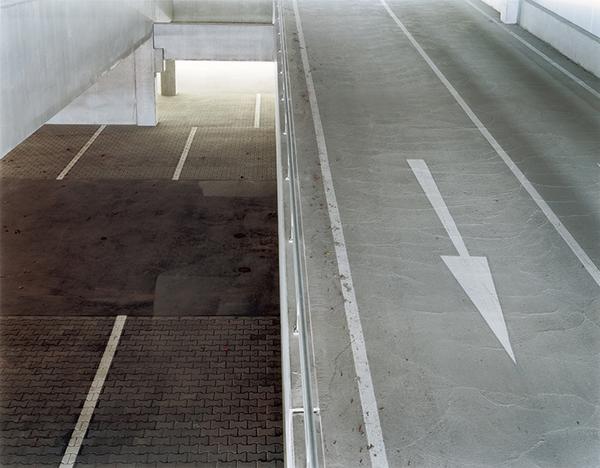
Matthias Hoch
Ravensburg # 24, 2002
c-print
117.3 × 150.8 cm
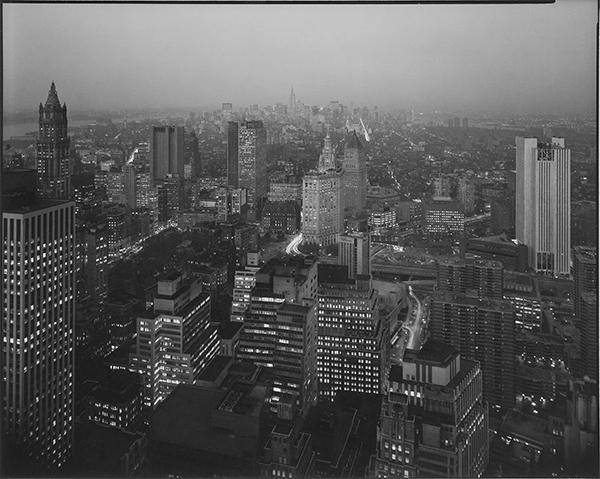
Nicholas Nixon
View North from Wall Street, New York, 1975
gelatin silver contact print
19.5 × 24.6 cm

































